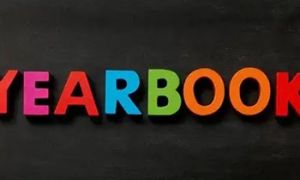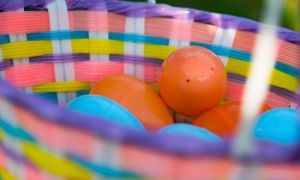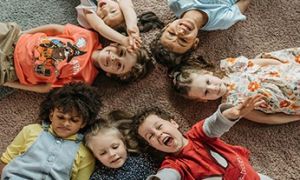In Australia, early education and care programs and practices are governed by the National Quality Standards (NQS). In this Element 1.3.1, states that “Each child’s learning and development is assessed or evaluated as part of an ongoing cycle of observation, analysing learning, documentation, planning, implementation and reflection”. This ‘ongoing cycle’ is also referred to as the Planning Cycle and is the responsibility of educators and carers in the early childhood context.
Role Of Documentation In The Planning Cycle
Educators or carers sometimes lose sight of the planning cycle as they are caught up in the content and processes of documentation. It is important to understand that the two are not interchangeable - documentation is what educators use to show evidence of the planning cycle. Also, documentation is not just a description of what children are doing in the classroom or playground. It captures the achievements and strengths of individual children, what they know, what they are investigating, what they can understand besides their identity and culture. Under the Education and Care Services National Regulations, the amount of documentation depends on how often and for how long children attend a service. Documentation must ensure that the program is clearly displayed at the service and information about the content, operation and the child’s participation must be provided to parents on request.
The Purpose Of The Planning Cycle
At the outset, educators need to engage with the planning cycle to meet regulatory requirements. Quality Area 1 and Standard 1.2 of the NQS clearly lays out that educators need to be active and reflective in designing and delivering the program for each child and the way to do this is to engage with the planning cycle. The planning cycle thus helps educators to:
- assess their learning and progress
- engage with the principles, practices and outcomes of approved learning frameworks
- set goals for individual and group learning
- involving families in decision making
- use collaboration with colleagues to affirm and challenge practices
- plan for further learning that supports children as capable, competent people with agency and the ability to make choices and decisions
What Should Inform The Planning Cycle?
The principles that inform the planning cycle are outlined in Quality Area 1 of the NQS. The planning cycle devised by educators and/or carers should
- Be based on an approved learning framework
- take into account the learning needs and interests of each child
- design Assessments or evaluations in ways that support the delivery of the program for children according to the Education and Care Services National Regulations.
- assess developmental needs, interests, experiences, participation and progress against the outcomes of the program for children preschool age
- evaluation of the child’s wellbeing, development and learning For school-age children
In order to gain even more clarity on your own reasons and preferences during the planning and documenting it can be helpful to ask yourself:
- How do I currently document and why do I do it the way I do?
- What theories – developmental, socio-cultural, behavioural etc. – inform the ways I organise my documentation?
- In what ways have I critically reflected on or documented the programme?
Five stages of the Planning Cycle
The planning cycle can be divided into 5 stages:
- Observation
The phase of the planning cycle is about observing each child and collecting information on their current knowledge, strengths, skills, abilities, interests as well as culture and background. In order to gather this information, educators and carers use different formats of documentation like:
- Bulletin board displays that show a process like an idea web
- Wall displays showing children’s artworks
- Photos or photographic sequences of children engaged in learning with their own captions or by the teacher
- Observation notes were written by teachers
- Scrapbooks and floorbooks
- Individual portfolios showing progress in specific domains across a time period
For example, if an educator observes a child developing a particular interest in playing with sand, they can document the observation as an entry in a learning journal. Such an observation will note what the child has been playing with, how they are manipulating the tools, materials and extending the play into other elements and contexts. The observation is then shared with families and their inputs are sought. The educator might get to know that a relative has recently returned from a holiday to Egypt or that a parent gifted the child with a book on ancient Pyramids.
Documentation should thus be rich and meaningful; it should reflect the individual child’s needs but also reflect them holistically; it should incorporate the points of view of all key stakeholders including those of children, educators, peers, families and other professionals. Above all, the educator or carer should have a very clear idea about why they are documenting and how this particular documentation will add value to outcomes for children.
- Analysing
The next phase requires the educator to analyse the information gathered previously and draw insights, inferences and possibilities related to the child’s learning. The educator not only needs to reflect on what the child is learning about also how and why, in what ways such learning is linked to approved learning frameworks and also how their own documentation shows evidence of such learning. So related to the above example, the educator might ask analysing questions like:
- What does this information tell us about the child‘s sense of belonging, connectedness and wellbeing?
- How can we build on the knowledge and understandings that the child has developed?
- How can this best be documented?
- Planning
Once the educator has analysed the observations gathered through documentation, the next step is to plan experiences, interactions and environments that build on children’s interests, abilities and identities based on the requisite learning outcomes outlined in approved learning frameworks. While planning the educator might need to reflect on their own intentions for furthering the learning and development of the child. Planning will also involve choosing appropriate learning strategies, resources and time besides setting up the necessary learning environment. Additionally, the planning process has to be made visible through relevant documentation. Planning is usually carried out by goal setting and deciding teaching strategies to meet those goals. Is the planning visible? So, to continue with the above example, the educator can plan to facilitate continuity of learning from the child’s home environment and build on foundations of prior learning through responsiveness to strengths, skills and knowledge.
- Implementing
This phase of the planning cycle involves educators putting their plans in action in ways that would meet children’s learning outcomes according to approved learning frameworks. The implementation would address children’s learning routines, transitions, interactions, indoor and outdoor environments, group projects and investigations. Some questions that educators can ask to reflect on implementation strategies are:
- How can I use all aspects of the day while designing learning opportunities?
- How does my implementation demonstrate play-based learning
- How does it allow children to use their choice and agency
- In what ways is the implementation of my learning plans visible?
In the above example, the educator might use strategies like intentional teaching-scaffolding, open-questioning, engaging in shared thinking and problem-solving to extend the child’s thinking and learning.
- Evaluating
The final stage of the planning cycle is about reflecting on the effectiveness and relevance of all the observation, analysis, planning and implementation that has been happening till now. So in the example, the evaluation will involve the educator recognizing that sensory tasks like playing with sand provide children with time and space to engage in individual pursuits and develop their creative skills. The educator may take up the question - What role do the senses play in development – for further action research or extend the child’s interest in books to literacy learning.
While closing the loop of the planning cycle, educators can also reflect on how evaluation should be more than sharing how the children did or didn’t enjoy the experience – in other words, how all the stages of the planning cycle can be used to modify, change or change learning program and practice.
The Planning Cycle is an incredibly valuable tool in developing children as capable and confident learners. Understanding the purpose behind this cycle gives educators a solid foundation on which to grow as professionals and to support the overall development of each individual child.
References:
Unpacking The Planning Cycle, ACECQA
Unpacking The Planning Cycle Part 1, ACECQA
Unpacking The Planning Cycle Part 2, ACECQA
Planning Cycle InfoGraphic, ACECQA
Educators Guide To The EYLF, ACECQA



 Here is the list of the EYLF Learning Outcomes that you can use as a guide or reference for your documentation and planning. The EYLF
Here is the list of the EYLF Learning Outcomes that you can use as a guide or reference for your documentation and planning. The EYLF The EYLF is a guide which consists of Principles, Practices and 5 main Learning Outcomes along with each of their sub outcomes, based on identity,
The EYLF is a guide which consists of Principles, Practices and 5 main Learning Outcomes along with each of their sub outcomes, based on identity, This is a guide on How to Write a Learning Story. It provides information on What Is A Learning Story, Writing A Learning Story, Sample
This is a guide on How to Write a Learning Story. It provides information on What Is A Learning Story, Writing A Learning Story, Sample One of the most important types of documentation methods that educators needs to be familiar with are “observations”. Observations are crucial for all early childhood
One of the most important types of documentation methods that educators needs to be familiar with are “observations”. Observations are crucial for all early childhood To support children achieve learning outcomes from the EYLF Framework, the following list gives educators examples of how to promote children's learning in each individual
To support children achieve learning outcomes from the EYLF Framework, the following list gives educators examples of how to promote children's learning in each individual Reflective practice is learning from everyday situations and issues and concerns that arise which form part of our daily routine while working in an early
Reflective practice is learning from everyday situations and issues and concerns that arise which form part of our daily routine while working in an early Within Australia, Programming and Planning is reflected and supported by the Early Years Learning Framework. Educators within early childhood settings, use the EYLF to guide
Within Australia, Programming and Planning is reflected and supported by the Early Years Learning Framework. Educators within early childhood settings, use the EYLF to guide When observing children, it's important that we use a range of different observation methods from running records, learning stories to photographs and work samples. Using
When observing children, it's important that we use a range of different observation methods from running records, learning stories to photographs and work samples. Using This is a guide for educators on what to observe under each sub learning outcome from the EYLF Framework, when a child is engaged in
This is a guide for educators on what to observe under each sub learning outcome from the EYLF Framework, when a child is engaged in The Early Years Learning Framework describes the curriculum as “all the interactions, experiences, activities, routines and events, planned and unplanned, that occur in an environment
The Early Years Learning Framework describes the curriculum as “all the interactions, experiences, activities, routines and events, planned and unplanned, that occur in an environment


